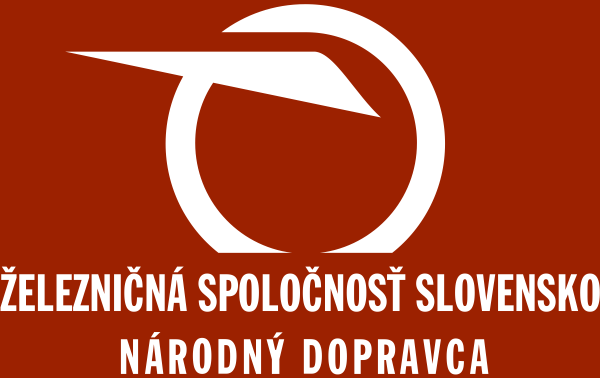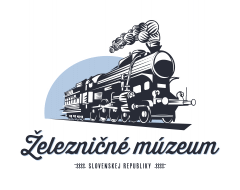Ázia západná (Blízky východ)
Železnice v krajinách západnej Ázie (Turecko, Irán, Irak, Azerbajdžan, Gruzínsko, Arménsko, Sýria, Saudská Arábia, Jordánsko, Izrael, ...).
ad laci.
ide a klasicke stroje pouzivane vsade kade v byvalom Zvazu na roznych pionierskych a uzkorozchodnych zelezniciach. Ten motorovy rusen je zmensena kopia Sergeja Tu2.
http://narrow.parovoz.com/Tu2.html
Parna lokomotiva je konstrukcne velmi blizka skodovackej lokomotive, ktore boli vyrabane vo viacerych fabrikach na uzemi byvalej RVHP (Skoda, Ganz, Polsko, Tusko, a Cina).
Ide pravdepodobne o typ VP
http://narrow.parovoz.com/vp.php
ide a klasicke stroje pouzivane vsade kade v byvalom Zvazu na roznych pionierskych a uzkorozchodnych zelezniciach. Ten motorovy rusen je zmensena kopia Sergeja Tu2.
http://narrow.parovoz.com/Tu2.html
Parna lokomotiva je konstrukcne velmi blizka skodovackej lokomotive, ktore boli vyrabane vo viacerych fabrikach na uzemi byvalej RVHP (Skoda, Ganz, Polsko, Tusko, a Cina).
Ide pravdepodobne o typ VP
http://narrow.parovoz.com/vp.php
Odkaz na príspevok: https://www.vlaky.net/diskusia/link/78567/
Nove vykurovacie vozne pre Iracke zeleznice.
Dodávane z Turecka:
http://www.tcdd.gov.tr/haberler/tuvjenerator.htm
Podobne TULOMSAS dodáva aj lokomtivy typu DH10000's do Iraku.
Dodávane z Turecka:
http://www.tcdd.gov.tr/haberler/tuvjenerator.htm
Podobne TULOMSAS dodáva aj lokomtivy typu DH10000's do Iraku.
Odkaz na príspevok: https://www.vlaky.net/diskusia/link/78563/
http://www.railwaygazette.com/ , 01. 06. 2006 - Israel Railways has completed a 1·2 km south-to-west curve connecting its Lod - Rosh-ha-Ayin line with the branch now under construction from Ben Gurion Airport to Modi'in. Expected to open towards the end of this year, the link will enable services from Be'er Sheva, Dimona and Ashkelon to Tel Aviv to run via the airport.
Odkaz na príspevok: https://www.vlaky.net/diskusia/link/78370/
Afghánistán se možná brzy dočká 124 kilometrů dlouhé železnice, spojující na západě ležící Herát s Íránem. Zatím je na afghánském území jen nákladové nádraží Hajratán, jež spojuje dvousetmetrová jednokolejka vedoucí po mostu s uzbeckým Termezem. Nová trať by tedy byla první železnicí v pravém smyslu slova v zemi, jíž by otevřela nové obchodní vazby s okolním světem.
„Bude to nejlevnější tranzitní trasa,“ řekl agentuře Pažvák náměstek ministra veřejných prací Valí Muhammad Rasúlí. Memorandum o stavbě dráhy podepsala delegace afghánského prezidenta Hamída Kárzaího, jež se včera vrátila z dvoudenní návštěvy Teheránu.
Vnitrozemský Afghánistán je silně závislý na dovozech přes Pákistán, z jehož přístavů do země proudí většina zboží - od čínského toaletního papíru po japonské automobily. Cenové poměry i přetíženost dosavadních tras po svržení tálibánského režimu ale odklánějí tranzit stále více na íránské území.
(Právo)
„Bude to nejlevnější tranzitní trasa,“ řekl agentuře Pažvák náměstek ministra veřejných prací Valí Muhammad Rasúlí. Memorandum o stavbě dráhy podepsala delegace afghánského prezidenta Hamída Kárzaího, jež se včera vrátila z dvoudenní návštěvy Teheránu.
Vnitrozemský Afghánistán je silně závislý na dovozech přes Pákistán, z jehož přístavů do země proudí většina zboží - od čínského toaletního papíru po japonské automobily. Cenové poměry i přetíženost dosavadních tras po svržení tálibánského režimu ale odklánějí tranzit stále více na íránské území.
(Právo)
Odkaz na príspevok: https://www.vlaky.net/diskusia/link/77055/
Siemens Wins Breakthrough Israel Order
March 31, 2006 - ISRAEL Railways is buying 86 passenger coaches from Siemens in a Euros 125 million order. The coaches will operate in 10-car push-pull sets, including a driving trailer and generator car at a maximum speed of 160km/h.
Final assembly will take place in Israel, with deliveries due to start at the end of next year. The contract includes an option for a further 585 coaches.
March 31, 2006 - ISRAEL Railways is buying 86 passenger coaches from Siemens in a Euros 125 million order. The coaches will operate in 10-car push-pull sets, including a driving trailer and generator car at a maximum speed of 160km/h.
Final assembly will take place in Israel, with deliveries due to start at the end of next year. The contract includes an option for a further 585 coaches.

Odkaz na príspevok: https://www.vlaky.net/diskusia/link/66853/
Svetová banka včera poskytla Turecku pôžičku 143,7 milióna eur na modernizáciu zastaraného železničného systému. Turecká vláda ju využije na zlepšenie infraštruktúry a zmeny manažmentu a obslužného personálu štátnych železníc. Starý turecký železničný systém v posledných rokoch zapríčinil niekoľko dopravných nešťastí. V júli 2004 sa na severozápade krajiny vykoľajil nový expresný vlak, okrem 36 obetí ďalších 81 ľudí utrpelo zranenia. Nový expres začal na trati medzi Istanbulom a Ankarou premávať začiatkom júna 2004 aj napriek varovaniam inžinierov, že zastarané turecké koľajnice nie sú na premávku vysokorýchlostných moderných vlakových súprav vhodné.
(http://www.sme.sk/c/2630417/Svetova-banka-zaplati-modernizaciu-tureckych-zeleznic.html )
(http://www.sme.sk/c/2630417/Svetova-banka-zaplati-modernizaciu-tureckych-zeleznic.html )
Odkaz na príspevok: https://www.vlaky.net/diskusia/link/64011/
Link na ten prispevok o obnovenej zeleznici v Jordansku:
http://www.ceskatelevize.cz/vysilani/prog19662.html?ilink=30441
http://www.ceskatelevize.cz/vysilani/prog19662.html?ilink=30441
Odkaz na príspevok: https://www.vlaky.net/diskusia/link/62282/
Diskusia o zelezniciach Iranskej Islamskej republiky uz existuje: http://www.vlaky.net/online/diskusia/tema.asp?lang=1&id=9053
Odkaz na príspevok: https://www.vlaky.net/diskusia/link/61920/
Middle East Resurgence
http://www.railjournal.com/ , David Briginshaw, Editor-In-Chief - THIS month we report on how the Middle East, until recently a railway backwater, has sprung into life in a relatively short time. Necessity and political will have combined to get projects moving in countries where rail has either played a very minor role or been non-existent. Now even projects that have been dormant for decades are being revived.
In the 1980s, both Iraq and Syria invested heavily in the construction of new lines. The two new Iraqi lines were built to high standards. Proposals were put forward for a Gulf railway stretching from Iraq through Kuwait, Saudi Arabia to the United Arab Emirates and Oman, as well as new lines in Saudi Arabia. But the first Gulf war brought the expansion phase to an abrupt halt and shattered any dreams of a real network serving the region.
So what has changed? After all, things could hardly be worse in Iraq, and there is still political instability centred on the continuing conflict between Israel and Palestine. But not all of the Middle East is like that, far from it. Oil has brought great wealth to several countries, but this has led to a boom in car ownership and rapidly worsening congestion in major cities. Dubai is now the first city on the Arabian Peninsular to build a metro to help solve its traffic congestion problems and enable the city to continue on its rapid growth path.
There is also a realisation that now is the right time to invest the profits from oil into activities that will benefit the population in the long term, such as schools and hospitals, but also allow other industries to flourish. Saudi Arabia is embarking on three major rail projects. The Landbridge will link the Gulf with the Red Sea by rail for the first time and speed imports to Riyadh in the centre. The Mecca Medina Rail Link will link these cities to Jeddah by rail both for commuters and pilgrims. The North South Railway will enable Saudi Arabia to start tapping into its huge mineral wealth. The latter will also extend the railway up to the Jordanian border, paving the way for links to Jordan and beyond. There are also plans for the construction of more lines in Saudi Arabia in the long term.
The Saudi rail projects improve the chances for the construction of a Gulf Railway, particularly when the line from Dammam to Jubail and Raz az Zawr along the Gulf coast is completed. The UAE is considering the construction of a railway for the transport of oil derivatives. This could be another building block of an 1800km line stretching from Basra in Iraq to Muscat in Oman.
But the situation in Iraq has to improve immeasurably before it can play any meaningful role in such a project. Mr Mark Hemphill, a senior railway consultant with the Iraq Reconstruction Management Office of the US State Department, gave a graphic description of the current situation at a conference on railway security organised in January by IRJ’s North American sister magazine, Railway Age.
Iraq’s 1905km standard-gauge network suffered more than $US 1 billion damage in 2003, but primarily from looting. Workshops and stations were reduced to masonry shells, signalling and telecommunications were destroyed, Pandrol fastenings on about 100km of track were stolen, and 80% of locomotives and rolling stock were stripped of parts and materials. Bridges, track and structures suffered damage during the war.
A $US 217 million reconstruction programme is underway, but continuing attacks are hampering efforts to restore services. There have been more than 1500 attacks on fixed installations to date, and repair crews often come under fire. Eight managers and more than 20 staff have been killed. Trains carry up to 20 armed police.
Iraqi Republic Railways (IRR) registered 1.75 billion tonne-km of railfreight in
http://www.railjournal.com/ , David Briginshaw, Editor-In-Chief - THIS month we report on how the Middle East, until recently a railway backwater, has sprung into life in a relatively short time. Necessity and political will have combined to get projects moving in countries where rail has either played a very minor role or been non-existent. Now even projects that have been dormant for decades are being revived.
In the 1980s, both Iraq and Syria invested heavily in the construction of new lines. The two new Iraqi lines were built to high standards. Proposals were put forward for a Gulf railway stretching from Iraq through Kuwait, Saudi Arabia to the United Arab Emirates and Oman, as well as new lines in Saudi Arabia. But the first Gulf war brought the expansion phase to an abrupt halt and shattered any dreams of a real network serving the region.
So what has changed? After all, things could hardly be worse in Iraq, and there is still political instability centred on the continuing conflict between Israel and Palestine. But not all of the Middle East is like that, far from it. Oil has brought great wealth to several countries, but this has led to a boom in car ownership and rapidly worsening congestion in major cities. Dubai is now the first city on the Arabian Peninsular to build a metro to help solve its traffic congestion problems and enable the city to continue on its rapid growth path.
There is also a realisation that now is the right time to invest the profits from oil into activities that will benefit the population in the long term, such as schools and hospitals, but also allow other industries to flourish. Saudi Arabia is embarking on three major rail projects. The Landbridge will link the Gulf with the Red Sea by rail for the first time and speed imports to Riyadh in the centre. The Mecca Medina Rail Link will link these cities to Jeddah by rail both for commuters and pilgrims. The North South Railway will enable Saudi Arabia to start tapping into its huge mineral wealth. The latter will also extend the railway up to the Jordanian border, paving the way for links to Jordan and beyond. There are also plans for the construction of more lines in Saudi Arabia in the long term.
The Saudi rail projects improve the chances for the construction of a Gulf Railway, particularly when the line from Dammam to Jubail and Raz az Zawr along the Gulf coast is completed. The UAE is considering the construction of a railway for the transport of oil derivatives. This could be another building block of an 1800km line stretching from Basra in Iraq to Muscat in Oman.
But the situation in Iraq has to improve immeasurably before it can play any meaningful role in such a project. Mr Mark Hemphill, a senior railway consultant with the Iraq Reconstruction Management Office of the US State Department, gave a graphic description of the current situation at a conference on railway security organised in January by IRJ’s North American sister magazine, Railway Age.
Iraq’s 1905km standard-gauge network suffered more than $US 1 billion damage in 2003, but primarily from looting. Workshops and stations were reduced to masonry shells, signalling and telecommunications were destroyed, Pandrol fastenings on about 100km of track were stolen, and 80% of locomotives and rolling stock were stripped of parts and materials. Bridges, track and structures suffered damage during the war.
A $US 217 million reconstruction programme is underway, but continuing attacks are hampering efforts to restore services. There have been more than 1500 attacks on fixed installations to date, and repair crews often come under fire. Eight managers and more than 20 staff have been killed. Trains carry up to 20 armed police.

Iraqi Republic Railways (IRR) registered 1.75 billion tonne-km of railfreight in
Odkaz na príspevok: https://www.vlaky.net/diskusia/link/61917/
Saudi Arabia Pushes On With Expansion Projects
http://www.railjournal.com/ , David Briginshaw, Editor-in-Chief - Saudi Arabia is pushing ahead with three ambitious projects to build new lines totalling 3770km. This will treble the size of the existing network.
SAUDI Arabia is similar in size to Western Europe. It is among the 25 largest economies in the world and the largest in the Arab world. But the country has a population of only 24 million, although this is set to double in the next 15 years, and a very small rail network consisting of a 449km passenger line linking Riyadh with the Gulf port of Dammam, and a 556km freight line which takes a more circuitous route between these two cities via Harad.
The Saudi economy is doing very well. Last year, it grew by 6.5%, inflation was at just 0.6%, and the country had a record surplus of $US 87 billion. Gross domestic product was $US 307 billion last year, and is forecast to grow by 4.15% during the next five years.
Saudi Arabia is sitting on one-quarter of the world’s hydrocarbon reserves. The country is also mineral rich, but much of this remains untapped. In 2004, only $US 20 million was spent on exploration in Saudi Arabia compared with $US 600 million in Canada. Steps are now being taken to encourage investment in mining, as the government wants to diversify the economy to reduce its dependence on oil. A number of laws have been passed since 2000 to encourage foreign investment. A $US 800 billion privatisation programme was launched in 2002. Saudi Arabia became a full member of the World Trade Organisation at the end of last year.
The government has now launched a $US 624 billion investment programme covering the next 15 years to 2020, of which $US 140 billion is for infrastructure.
Each of the rail projects is being pursued for a different primary reason. The Saudi Landbridge, as its name implies, will create a rail link for the first time between the Arabian Gulf and Red Sea coasts, mainly for container traffic. It involves the construction of a 950km line from Riyadh to the Red Sea port and city of Jeddah, and a 120km line from Dammam north along the Gulf coast to Jubail.
Work started in January on the construction of King Abullah City in Jubail, a $US 26.6 billion project to build a deep-sea port, a “financial island,” and separate zones for industry, education, housing, and tourism.
The Mecca--Medina Rail Link (MMRL) will be a 500km high-speed passenger railway connecting Jeddah with the holy cities of Mecca and Medina. Both this and the Landbridge project are being pursued as build, operate, transfer (BOT) schemes with Saudi Railways Organisation (SRO) as the executing agency.
The third rail project—the North-South Railway—will be funded publicly by the Saudi Public Investment Fund and the Saudi mining company Ma’aden. This is the largest of the three projects and involves construction of 2200km of lines linking northern Saudi Arabia with the Gulf Coast and Riyadh. This will primarily be a heavy-haul railway to carry phosphates and bauxite.
The Landbridge project was launched last year and is the most advanced of the three. SRO expects to announce shortly which of nine consortia have been qualified to participate in the tender process for the project. The concession to fund, build, operate and maintain the Landbridge will incorporate SRO, thereby privatising what is currently a government department. The relevant railway assets, including Riyadh Dry Port, and staff will be transferred to a new company ahead of the award of the concession. This will then be transferred to the concessionaire. A separate passenger concession will eventually be established to operate the existing Riyadh--Dammam service and the planned services on the new lines.
The Landbridge will be built as a single-track railway with passing loops, but with the option to double the track i
http://www.railjournal.com/ , David Briginshaw, Editor-in-Chief - Saudi Arabia is pushing ahead with three ambitious projects to build new lines totalling 3770km. This will treble the size of the existing network.
SAUDI Arabia is similar in size to Western Europe. It is among the 25 largest economies in the world and the largest in the Arab world. But the country has a population of only 24 million, although this is set to double in the next 15 years, and a very small rail network consisting of a 449km passenger line linking Riyadh with the Gulf port of Dammam, and a 556km freight line which takes a more circuitous route between these two cities via Harad.
The Saudi economy is doing very well. Last year, it grew by 6.5%, inflation was at just 0.6%, and the country had a record surplus of $US 87 billion. Gross domestic product was $US 307 billion last year, and is forecast to grow by 4.15% during the next five years.
Saudi Arabia is sitting on one-quarter of the world’s hydrocarbon reserves. The country is also mineral rich, but much of this remains untapped. In 2004, only $US 20 million was spent on exploration in Saudi Arabia compared with $US 600 million in Canada. Steps are now being taken to encourage investment in mining, as the government wants to diversify the economy to reduce its dependence on oil. A number of laws have been passed since 2000 to encourage foreign investment. A $US 800 billion privatisation programme was launched in 2002. Saudi Arabia became a full member of the World Trade Organisation at the end of last year.
The government has now launched a $US 624 billion investment programme covering the next 15 years to 2020, of which $US 140 billion is for infrastructure.
Each of the rail projects is being pursued for a different primary reason. The Saudi Landbridge, as its name implies, will create a rail link for the first time between the Arabian Gulf and Red Sea coasts, mainly for container traffic. It involves the construction of a 950km line from Riyadh to the Red Sea port and city of Jeddah, and a 120km line from Dammam north along the Gulf coast to Jubail.
Work started in January on the construction of King Abullah City in Jubail, a $US 26.6 billion project to build a deep-sea port, a “financial island,” and separate zones for industry, education, housing, and tourism.
The Mecca--Medina Rail Link (MMRL) will be a 500km high-speed passenger railway connecting Jeddah with the holy cities of Mecca and Medina. Both this and the Landbridge project are being pursued as build, operate, transfer (BOT) schemes with Saudi Railways Organisation (SRO) as the executing agency.
The third rail project—the North-South Railway—will be funded publicly by the Saudi Public Investment Fund and the Saudi mining company Ma’aden. This is the largest of the three projects and involves construction of 2200km of lines linking northern Saudi Arabia with the Gulf Coast and Riyadh. This will primarily be a heavy-haul railway to carry phosphates and bauxite.
The Landbridge project was launched last year and is the most advanced of the three. SRO expects to announce shortly which of nine consortia have been qualified to participate in the tender process for the project. The concession to fund, build, operate and maintain the Landbridge will incorporate SRO, thereby privatising what is currently a government department. The relevant railway assets, including Riyadh Dry Port, and staff will be transferred to a new company ahead of the award of the concession. This will then be transferred to the concessionaire. A separate passenger concession will eventually be established to operate the existing Riyadh--Dammam service and the planned services on the new lines.
The Landbridge will be built as a single-track railway with passing loops, but with the option to double the track i
Odkaz na príspevok: https://www.vlaky.net/diskusia/link/61915/















V dôsledku zrážky sa vykoľajila a prevrátila lokomotíva a prvé dva vozne vlakovej súpravy. V jednom z nich našlo svoju smrť päť pasažierov. Prepravu zranených ľudí do najbližších nemocníc zabezpečovali popri početných sanitkách aj helikoptéry. Väčšina z nich má ľahké zranenia.
Vo vlaku, ktorý bol na ceste z Tel Avivu do Haify, bolo približne 200 ľudí. Vodič nákladného auta, ktorému sa včas podarilo opustiť kabínu, vyšetrovateľom povedal, že musel nechať vozidlo na železničnej trati v dôsledku technickej poruchy. Šofér sa o hroziacom nebezpečenstve pokúsil telefonicky informovať príslušné úrady, ale jeho varovanie prišlo pre rušňovodiča neskoro. Vodič neutrpel žiadne poranenia.
Jeho výpoveď o technickej chybe potvrdili viacerí svedkovia tragédie. "Predné kolesá sa zasekli. Vodič stihol vyskočiť z kabíny predtým, ako sa spustili železničné závory," povedala jedna zo svedkýň havárie. Podľa jej slov vlaková súprava narazila do odstaveného auta v plnej rýchlosti.
(http://www.sme.sk/c/2759487/Vlakove-nestastie-v-Izraeli-si-vyziadalo-pat-obeti-a-67-zranenych.html )